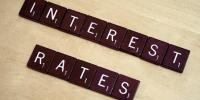
Image by woodleywonderworks on flickr.
No need for rate cuts - Shadow RBA
The Reserve Bank of Australia (RBA) should not cut interest rates again despite continued signs of domestic economic weakness and a subdued international outlook, with the next rate move needing to be an increase, Crawford School’s RBA Shadow Board has found.
The RBA lowered the cash rate from 2.25 per cent to 2.0 per cent in May, with the RBA Board to meet again to review policy settings on Tuesday.
RBA Shadow Board chair Dr Timo Henckel said while economic data shows signs of weakness, inflation remained within the RBA’s two to three per cent target band, while asset prices continue to rise.
“Unemployment is up slightly, investment down, and consumer and business confidence remain fragile. The international economy continues to pose a threat to the Australian economy and inflation remains comfortably within the RBA’s target band,” said Dr Henckel, from the ANU Centre for Applied Macroeconomic Analysis (CAMA).
“But asset prices, Sydney house prices in particular, continue to post high gains.
“The CAMA RBA Shadow Board on balance prefers to hold firm but believes the cash rate has bottomed and an increase is due in the near future.”
Dr Henckel said while unemployment had risen, wages growth remained well below the 17-year average. But domestic share prices and house prices, particularly in Sydney and Melbourne, remained buoyant.
“This remains a primary concern for many Shadow Board members as the asset price increases coincide with an increase in private sector leverage, leading to misallocated investment and opening up the possibility of a costly price correction,” Dr Henckel said.
He said the international economy remained subdued, with slower than expected growth in the US and no sign of a pickup in Europe, particularly while the Greek debt crisis remains unresolved.
Dr Henckel said the Shadow RBA Board attached a 60 per cent probability that 2.0 per cent should be the appropriate setting for the cash rate. The Shadow RBA Board found only 2 per cent probability of the need for a further rate cut, while the probability of a rate increase was 38 per cent.
In the long term, the probability that the cash rate should remain at 2.0 per cent in six months was 23 per cent. The probability that rates would need to be higher in six months was 76 per cent, and the probability of a needed rate cut was just three per cent.
The RBA Shadow Board is a project based at CAMA at Crawford School of Public Policy. It brings together nine of the country’s leading experts to look at the economy and make a probabilistic call on the optimal setting of interest rates ahead of monthly RBA Board meetings. It does not try to predict RBA behaviour.
The RBA Shadow Board includes Professor Bob Gregory and Professor Warwick McKibbin, who have both served on the RBA Board.
Other members are Paul Bloxham of HSBC; Dr Mark Crosby; Professor Guay Lim of the University of Melbourne; James Morley of University of New South Wales; Jeffrey Sheen of Macquarie University; Mardi Dungey of University of Tasmania; and John Romalis, Professor of economics at the University of Sydney.
Dr Henckel’s full commentary is available on the CAMA Shadow RBA Board website at https://cama.crawford.anu.edu.au/rba-shadow-board.
Updated: 27 July 2024/Responsible Officer: Crawford Engagement/Page Contact: CAP Web Team













